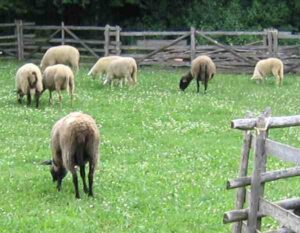The Lonk sheep is a dual-purpose domestic sheep of specific breed from United Kingdom. It is mainly found in the hills of the central and south Pennines, in the north of England.
The breed is also known as Improved Haslingden. Name of the breed ‘Lonk’ derives from the Lancashire word ‘lanky’, which means long and thin (usually in person). Range of these animals extends into only three counties; Derbyshire, Lancashire and Yorkshire.
The Lonk sheep is of the Blackfaced Mountain type, and it is similar to the Derbyshire Gritstone, apart from the absence of horns in that breed.
The breed was actually once formed by monks at Whalley and Sawley Abbey. An association for the breed named as ‘The Lonk Sheep Breeder’s Association‘ is based in Burnley, Lancashire.
There were fears during the 2001 epidemic of foot-and-mouth disease in Great Britain that the Lonk breed would become extinct but this did not happen and the breed still survives.
Today the breed is raised for both meat and wool production. Read some more information about this sheep breed below.
Lonk Sheep Characteristics
The Lonk sheep are medium sized animals. They have black and white faces. They have long and strong legs, which help them to suit well to the Pennine environment of rocky hills and peat bogs.
Both rams and ewes usually have horns, and horns of the rams are larger in size than the ewes. Photo and info from ansi.okstate.edu and Wikipedia.
Uses
The Lonk sheep are dual-purpose animals. They are raised for both meat and wool production.
Special Notes
The Lonk sheep are extremely hardy animals. They have very strong legs, and they are well suited to the Pennine environment of rocky hills and peat bogs.
They are dual-purpose animals and good for both meat and quality wool production. Review full breed profile of these sheep in the chart below.
| Breed Name | Lonk |
| Other Name | Improved Haslingden |
| Breed Purpose | Meat and wool |
| Special Notes | Very hardy and strong animals, well suited to the Pennine environment of rocky hills and peat bogs, they have very strong legs, dual-purpose, good for both meat and wool production |
| Breed Size | Medium |
| Horns | Yes |
| Climate Tolerance | Native climates |
| Color | White |
| Rarity | Common |
| Country/Place of Origin | United Kingdom |






